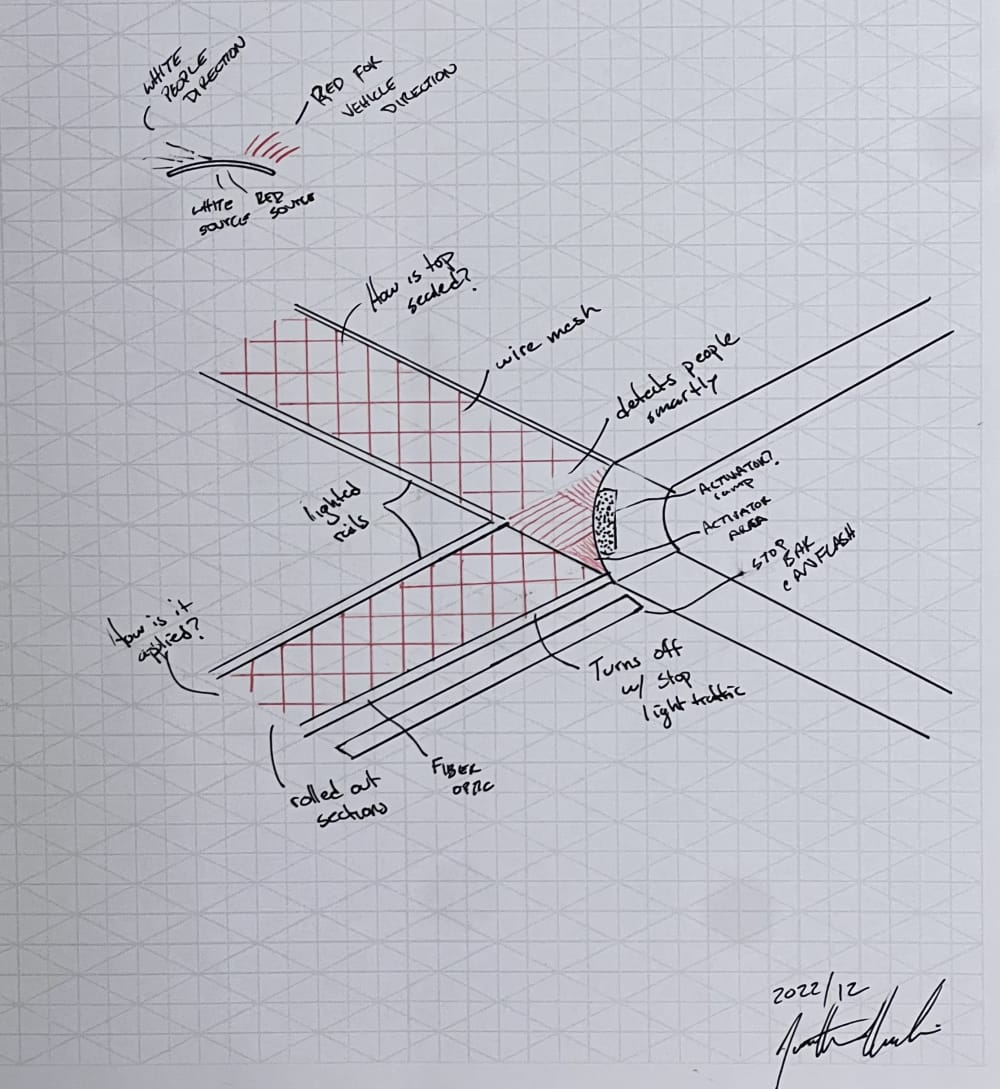Problem Addressed: Traditional crosswalks often lack adequate visibility, especially at night or during low-light conditions. Furthermore, push-button activation systems can be missed by pedestrians, particularly those with visual impairments or mobility limitations. These limitations contribute significantly to pedestrian safety concerns.
Proposed Solution: Automated lighted crosswalks offer a comprehensive solution to enhance pedestrian safety and accessibility, particularly in high-traffic areas or locations with limited visibility.
Functionality:
- Pedestrian Detection: Infrared sensors embedded within the pavement or pressure mats trigger the system upon detecting pedestrians waiting to cross.
- Light Activation: LED lights embedded in the road surface and mounted on signs illuminate the crosswalk, clearly marking the zone for drivers.
- Optional Traffic Signal Integration: The system can connect to existing traffic light infrastructure, initiating a pedestrian crossing phase when triggered.
Innovation and Benefits:
- Enhanced Visibility: Illuminated crosswalks with embedded LED lights significantly improve visibility, especially during low-light conditions. This surpasses the limitations of traditional crosswalks that rely solely on reflective paint, which can be less effective at night or in poor weather.
- Guaranteed Activation: Automatic pedestrian detection eliminates dependence on push-buttons, ensuring activation for all pedestrians. This is particularly beneficial for visually impaired users who may not be able to locate or press the button in time.
- Potential Traffic Flow Optimization: Integration with traffic signals allows for dynamic adjustments based on real-time pedestrian demand. This could potentially outperform basic pedestrian timers, leading to smoother traffic flow.
Feasibility and Marketability:
- The system leverages established technologies, making it feasible for manufacturing and integration:
- LED Lighting: LED technology offers superior durability, energy efficiency, and design flexibility for clear crosswalk illumination.
- Pedestrian Detection: Infrared sensors or pressure mats are proven technologies with a wide range of applications for pedestrian detection.
- Traffic Signal Integration: Existing traffic light infrastructure can be adapted for connection, promoting cost-effective implementation.
Market Potential:
- Widespread Applicability: Automated lighted crosswalks can be implemented in various locations, including high-traffic intersections, uncontrolled mid-block crosswalks, and areas with limited visibility due to weather or surrounding infrastructure.
- Strong Market Demand: By addressing pedestrian safety concerns, this solution appeals to municipalities, traffic authorities, and potentially private entities focused on improving pedestrian infrastructure.
Expanding the Market and Potential Impact:
Beyond core applications, automated lighted crosswalks can be designed with additional functionalities to further enhance safety and accessibility:
- Audio Cues: Integration with audible signals can provide supplementary crossing prompts for visually impaired pedestrians.
- Bicycle Detection: Including sensors to detect cyclists can trigger appropriate lighting patterns for increased awareness.
- Data Collection: The system could anonymously collect pedestrian and traffic flow data to inform future improvements in crosswalk design and traffic management.
In conclusion, automated lighted crosswalks represent a significant innovation in pedestrian safety solutions. Their feasibility, marketability, and potential for real-world impact make them a promising advancement in creating safer and more inclusive streetscapes. By incorporating additional functionalities, these systems can be further optimized to create a more comprehensive pedestrian safety ecosystem.
Like this entry?
-
About the Entrant
- Name:Jonathan Madonia
- Type of entry:individual
- Patent status:none


